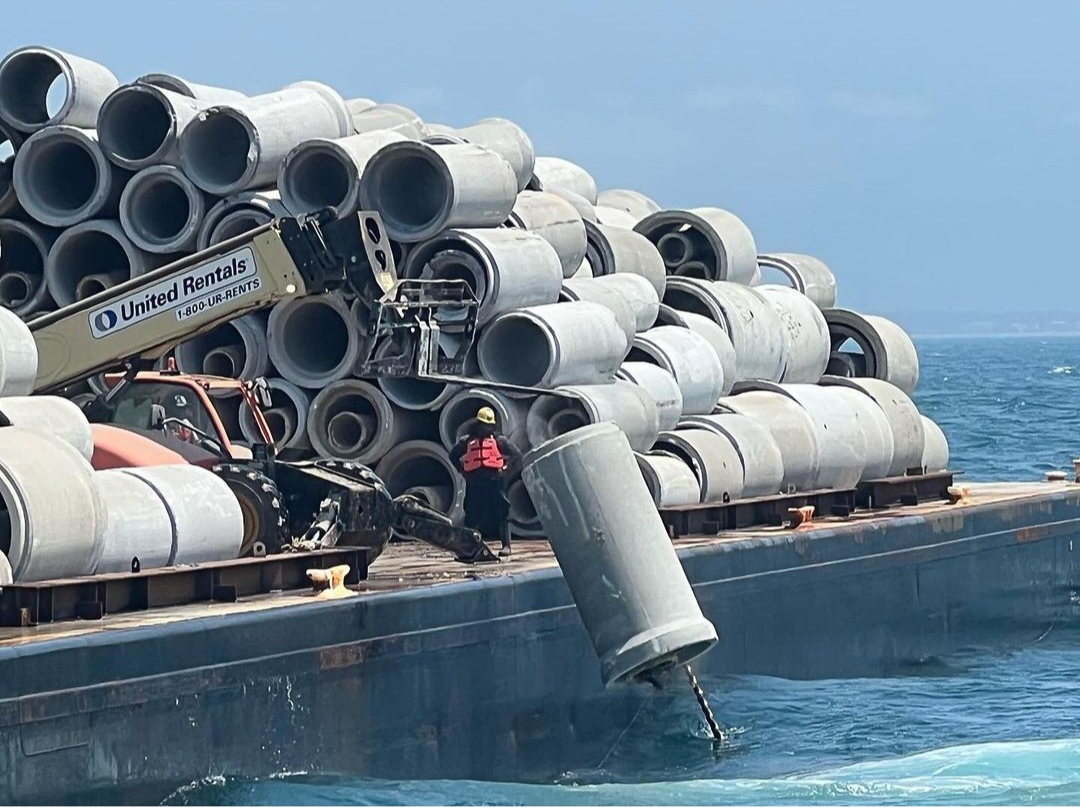
Several projects by the Division of Marine Fisheries’ Artificial Reef Program to build up North Carolina’s existing, offshore artificial reefs were recently completed.
Artificial reefs are a manmade underwater structure built to promote marine life in areas with a generally featureless bottom and serve as crucial spawning and foraging habitat for many commercially and recreationally important fish species.
Supporter Spotlight
The artificial reef program, in partnership with the North Carolina Department of Transportation, completed disposal of the remnants of the old Oregon Inlet Bridge, which was replaced in 2019 by the 2.8-mile Marc Basnight Bridge.
The 68 barge loads of bridge material, totaling 80,000 tons of concrete, is the largest amount of material associated with any artificial reef project in the history of program. The material was deposited at eight artificial reefs — six off Ocracoke Inlet, one off Beaufort Inlet and one off Bogue Inlet.
Also, two different reefs in Long Bay each received about 1,500 tons of recycled concrete pipe. The deployment was funded by Coastal Recreational Fishing License revenues. The pipe, including 1,100 tons from Columbus and Bladen counties, was donated by North Carolina Department of Transportation. Much of the pipe had been damaged during Hurricane Florence in 2018 and would have otherwise cost the state $65,000 to dispose the material in a landfill.
The state partnered with organizations including the nonprofits Veteran Memorial Reefs of Carolina Beach and Eternal Reefs Inc. of Sarasota, Florida, for memorial reef projects. Each organization placed cremated ashes of loved ones in concrete reef structures or reef balls, which were deployed at a reef sites off Wrightsville Beach and off Topsail.
Program officials also worked with the Coastal Conservation Association of North Carolina to enhance an artificial reef near Bayview in the Pamlico River. The association purchased material from Natrx, a Raleigh-based company that used a 3D printer to create 100 dimensional concrete reef structures for the project. The U.S. Fish and Wildlife Service Sportfish Restoration Grant funded the deployment of these structures.
Supporter Spotlight
The division maintains 68 artificial reefs, located from estuarine waters to 38 miles from shore. They are situated so that they can be reached from every maintained inlet in the state.







